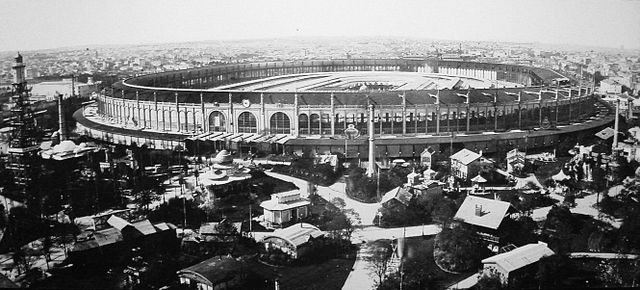Exposition Universelle (1867)
The Exposition Universelle of 1867, better known in English as the 1867 Paris Exposition, was a world's fair held in Paris, France, from 1 April to 3 November 1867. It was the second of ten major expositions held in the city between 1855 and 1937. A number of nations were represented at the fair. Following a decree of Emperor Napoleon III, the exposition was prepared as early as 1864, in the midst of the renovation of Paris, marking the culmination of the Second French Empire. Visitors included Tsar Alexander II of Russia, a brother of the King William and Otto von Bismarck of Prussia, Prince Metternich and Franz Josef of Austria, Ottoman Sultan Abdülaziz, and the Khedive of Egypt Isma'il.
Main building at the Champ de Mars
Official bird's-eye view of Exposition Universelle of 1867
Napoleon III receives the rulers and illustrious men who visited the Exposition universelle of 1867.
Swedish folk costumes on display at the International Exposition in 1867
A world's fair, also known as a universal exhibition or an expo, is a large global exhibition designed to showcase the achievements of nations. These exhibitions vary in character and are held in different parts of the world at a specific site for a period of time, typically between three and six months.
Poster advertising the Brussels International Exposition in 1897
Replica of the Gokstad Viking ship at the 1893 Chicago World's Fair
International Exhibition of Modern Decorative and Industrial Arts in Paris, France in 1925. Autochrome Lumière showing Polish pavilion.
Palace of the railways and great connections at the International Exhibition of Hydropower and Tourism in Grenoble, France in 1925








